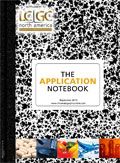Determination of Geosmin in Water Samples Using Person-Portable GC–MS and Sample Preparation Instruments
The Application Notebook
Torion Technologies Inc.
Geosmin is a naturally occurring compound released when soil-present microbes die. Communities can periodically experience episodes of unpleasant-tasting water when a sharp drop in this microbe population releases geosmin into ground water. Geosmin can be difficult to remove from water with standard water treatment processes, and knowing in advance that an episode has occurred will save time and money. A field method has been developed to detect geosmin in water at ppt levels.
Experimental Conditions
Field samples were collected from a river, creek, and lake located near the laboratory. Geosmin was extracted from each 500 mL sample by passing the water through a CUSTODION™-CT (conventional trap) at ambient temperature using a CLAIRION™ pump.
The extracted geosmin was then transferred to a CUSTODION-NT (needle trap) which introduces samples into the person portable TRIDION®-9 GC–MS, for compound analysis in the field. The geosmin was thermally desorbed from the CUSTODION-CT to NT using the FUZION™-3 SD (sample desorption) module.
Samples were injected into the TRIDION-9 GC–MS, which has a low thermal mass, capillary GC column (MXT-5, 5 m × 0.1 mm, 0.4 μm df), coupled to a toroidal ion trap mass spectrometer (TMS) detector having a mass range of 45–500 m/z.
Geosmin spiked in water at concentrations of 1, 10, 20, and 70 ppt (ng/L) was used to develop a linear calibration. Three replicates at each concentration were analyzed and included, which generated a standard curve with R2 = 0.9986.
Results/Conclusions
Geosmin was not present at levels above 1 ppt in the creek or river water samples. However, geosmin was detected at 2.5 ppt in the lake water sample, shown in Figure 1, the reconstructed m/z 112 ion chromatogram below (red). This is understandable since the sample was collected in July during the hot summer months in Utah. Geosmin can be detected at low ppt levels in water samples using the CUSTODION sample collection and extraction devices along with the TRIDION-9 GC–MS. These field portable devices represent a powerful combination for on-site sample preparation and detection of target compounds, saving time and money.

Figure 1: TIC and RIC (m/z = 112) of lake water sample processed and analyzed for geosmin. 2.5 ppt were detected in the sample as received.
Acknowledgments
TRIDION™ and CUSTODION® are trademarks of Torion Technologies Inc. The TRIDION-9, CUSTODION SPME syringe, and CHROMION® operating software are manufactured and sold under U.S. Patents and Applications 7,075,070, 7,075,064, 11/639,373, 11/379,716 and/or any division, continuations, revisions or foreign filings thereof.
These data represent typical results. For further technical assistance or purchasing information, contact:

Torion Technologies Inc.
796 East Utah Valley Dr., Suite 200, American Fork, UT 84003
tel. (801) 705-6600, fax (801) 705-6649
Website: www.torion.com

Separation of Ultra-Short and Long Chain PFAS Compounds Using a Positive Charge Surface Column
December 11th 2024A separation of ultra-short and long chain PFAS (C1-C18) is performed on a HALO®PCS Phenyl-Hexyl column along with a HALO®PFAS Delay column which demonstrates excellent retention for both hydrophilic and hydrophobic analytes.

.png&w=3840&q=75)

.png&w=3840&q=75)



.png&w=3840&q=75)



.png&w=3840&q=75)













